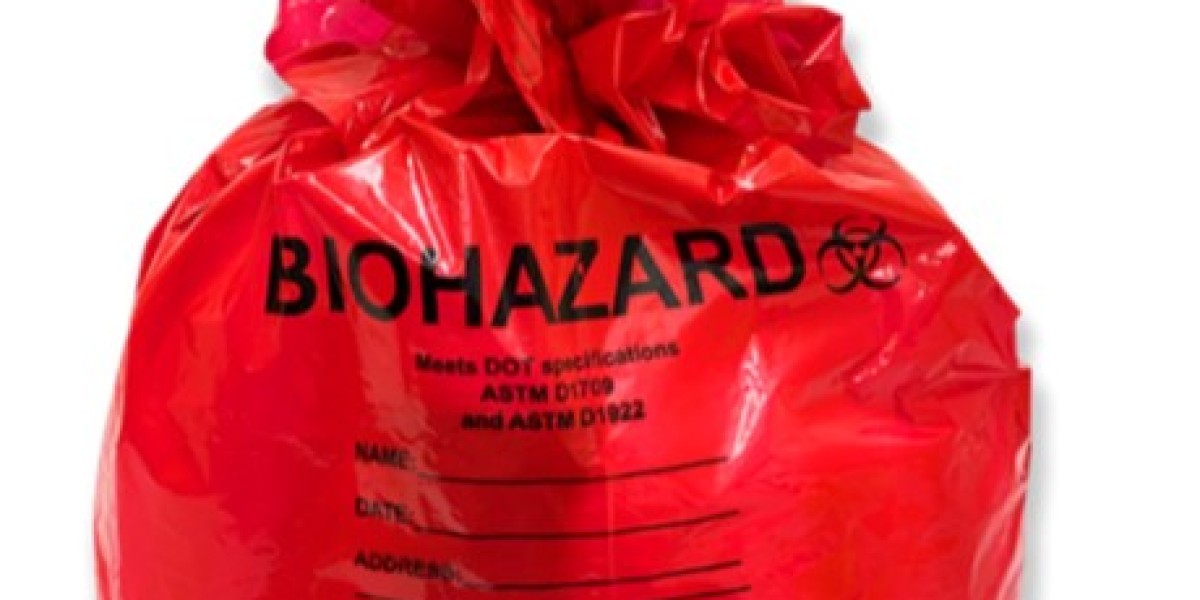Understanding Biomedical Waste
Biomedical waste is defined as any waste that is generated during the diagnosis, treatment, or immunization of humans or animals. This includes items such as blood-soaked bandages, used needles, laboratory cultures, and any other materials that can potentially transmit infections or pose environmental risks. In India, the increase in healthcare facilities has led to a surge in the generation of biomedical waste. According to recent estimates, India generates over 600 tons of biomedical waste every day. Without proper management, this waste can lead to serious health risks and environmental degradation.
The introduction of specialized Bio medical waste bags has been a significant step towards addressing this issue. These bags are specifically designed to contain and transport biomedical waste safely. However, the effectiveness of these bags hinges not only on their design but also on how they are labeled.
The Importance of Proper Labeling
1. Clear Identification
Proper labeling on biohazard bags is essential for clear identification. Labels should include important information such as the type of waste contained, its potential hazards, and any special handling instructions. This is particularly important in healthcare settings, where multiple types of waste are generated simultaneously. For instance, sharps waste (needles, blades) should be distinctly labeled to ensure that they are handled with the utmost care to prevent injury and contamination.
2. Compliance with Regulations
In India, the Biomedical Waste Management Rules, 2016, outline stringent regulations regarding the handling and disposal of biomedical waste. These regulations mandate that all Bio medical waste bags must be appropriately labeled to ensure compliance. Facilities that fail to adhere to these regulations not only risk penalties but also expose themselves to the dangers of mishandling hazardous materials. Proper labeling serves as a straightforward method for healthcare facilities to demonstrate their commitment to safety and compliance.
3. Enhanced Safety
For healthcare workers and waste disposal personnel, the risk of exposure to hazardous materials is a constant concern. Proper labeling of bio medical waste bags minimizes this risk by providing clear warnings and instructions. For example, biohazard symbols should be prominently displayed on all bags containing infectious waste. This visual cue alerts handlers to take the necessary precautions, thereby reducing the likelihood of accidents and injuries.
4. Effective Waste Management
Proper labeling is also crucial for the effective management of biomedical waste. When waste is clearly labeled, it enables better segregation at the source. Segregation is critical in ensuring that different types of waste are disposed of in the appropriate manner. For instance, bio medical waste bags containing sharps must be disposed of in designated containers, whereas chemical waste requires a different disposal method. Efficient segregation not only improves safety but also streamlines the waste disposal process, making it more efficient and cost-effective.
Best Practices for Labeling Biohazard Bags
To maximize the safety and effectiveness of biomedical waste management, healthcare facilities should adopt the following best practices for labeling biohazard bags:
1. Use Standardized Labels
Healthcare facilities should use standardized labels that comply with national and international regulations. These labels should include universally recognized symbols (like the biohazard symbol) and clear text indicating the nature of the waste. Using standardized labels helps maintain consistency and ensures that all staff members understand the importance of proper waste handling.
2. Includes Specific Information
Labels should provide specific information about the contents of the bag. For example, the label should indicate whether the bag contains sharps, infectious waste, or non-infectious waste. Additionally, including the date of disposal and the department responsible for the waste can facilitate tracking and accountability.
3. Regular Training and Awareness
Staff training is crucial to ensure that everyone understands the significance of proper labeling. Regular workshops and refresher courses should be conducted to reinforce the importance of safe waste disposal practices. Healthcare workers should be educated on how to read labels, understand the risks associated with various types of waste, and the correct procedures for disposing of Biomedical waste bags in India.
4. Conduct Routine Audits
Routine audits of biomedical waste management practices can help identify areas for improvement. Facilities should periodically review their labeling procedures and waste disposal practices to ensure compliance with regulatory requirements. Audits also serve as a means to reinforce training and promote a culture of safety within the organization.
The Role of Technology
With advances in technology, innovative labeling solutions are emerging. For instance, the use of QR codes on bio medical waste bags in India can enhance tracking and reporting. By scanning the QR code, waste handlers can access detailed information about the waste, including its origin, disposal method, and any associated hazards. This technological integration not only improves safety but also contributes to better regulatory compliance and documentation.
Conclusion
The proper labeling of biohazard bags is an essential safety measure that cannot be overlooked in the management of biomedical waste. As the volume of biomedical waste continues to rise, especially in countries like India, healthcare facilities must prioritize the safe and effective disposal of this waste. By ensuring clear identification, compliance with regulations, enhanced safety, and efficient waste management, proper labeling plays a pivotal role in protecting healthcare workers, waste handlers, and the environment.
In conclusion, as we strive for safer healthcare environments, let us remember that the simplest practices, like proper labeling of bio medical waste bags, can make a significant difference. Investing in education, technology, and adherence to best practices will pave the way for a safer future in biomedical waste management, benefiting not only healthcare facilities but society as a whole.
Frequently Asked Questions (FAQs)
What are the different types of biomedical waste bags in India?
In India, biomedical waste bags are categorized primarily into yellow (for incineratable waste), red (for recyclable waste), and blue/white (for sharp waste). Each type is used according to specific disposal protocols.
What are the consequences of improper labeling of biohazard bags?
Improper labeling can lead to accidents, environmental contamination, and legal repercussions for healthcare facilities. It may also expose staff and the public to health risks associated with biomedical waste.
How often should staff be trained on the use of biohazard bags?
Regular training should be conducted at least annually, or whenever there are updates to regulations or procedures. Ongoing training helps ensure staff remain aware of the importance of proper labeling and waste management practices.


